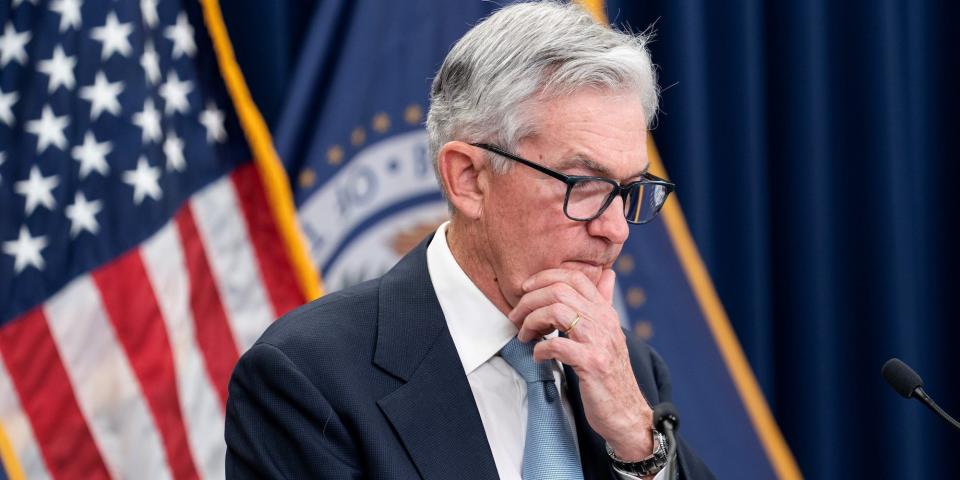Recent inflation data has convinced markets of a dovish pivot by the Federal Reserve.
But the market wrongly priced in a looser stance at least six times in the last few years, Deutsche Bank wrote.
While this time could be true, inflation is hardest to combat in the final stretch, analysts warned.
The stock market has been on a tear over the last month on hopes for a dovish pivot from the Federal Reserve, but investors have seen this movie before.
In fact, markets have incorrectly priced in such a pivot six times over the last two years, according to Deutsche Bank, which sounded cautious about this seventh time.
Since late October, the S&P 500 has soared 9% amid signs of weaker job growth and cooler-than-expected inflation, convincing many on Wall Street that the Fed’s tightening cycle is over, with fed funds futures even indicating greater odds of a rate cut as soon as March.
In a note Wednesday, Deutsche Bank recounted the previous six head-fakes and laid out what to consider this time:
1. November 2021: Omicron scare
Before the Fed launched its tightening cycle in March 2022, central bankers had telegraphed rate hikes were coming. But the emergence of the COVID Omicron variant in November 2021 fueled fear of new economic turmoil.
As worries mounted that the variant could evade vaccines, investors initially retreated. But then the S&P 500 rebounded to hit all-time highs by late December 2021 as markets pushed back the expected timing of the first hike.
2. Spring 2022: Ukraine war
Russia’s invasion of Ukraine in February 2022 drove concerns that the conflict would expand and hamper global growth, prompting the Fed to start with a lower-than-expected hike in March.
The S&P 500 advanced 3.6% that month as bond yields fell.
3. May 2022: Even more risks
The combination of China’s zero-COVID policies, the Ukraine war, and the start of Fed rate hikes fueled doubts about how hawkish the central bank would get.
The S&P 500 jumped 6.6% in the week ending May 27, its strongest weekly performance of 2022.
4. July 2022: Global recession?
Expectations for a global recession rose, and falling oil prices helped pull down inflation readings, with Chairman Jerome Powell even indicating that rate hikes may need to be slowed.
The S&P 500 rallied 9.1% that month.
5. Fall 2022: UK budget fiasco
The UK’s proposed budget that included more borrowing sent its financial markets into chaos as bond yields soared. That led to expectations the Fed would soon stop hiking and then start cutting in 2023.
The S&P 500 surged 5.7% over October 3-4, marking the biggest two-day rally since April 2020.
6. March 2023: Banking chaos
The sudden collapse of the Silicon Valley Bank convinced investors that the Fed would hold off on tighter policy and then start cutting in November.
Yields on 2-year Treasurys tumbled, and the S&P 500 jumped 7% from a low in the immediate aftermath of SVB’s collapse to the end of the March.
What about this time?
Today’s confidence in imminent Fed cuts could finally prove true, but Deutsche Bank pointed out that the final stretch in bringing inflation to the 2% target rate tends to be the most difficult.
By contrast, when inflation peaks, it’s often driven by temporary factors, such as an energy shock or supply-chain disruptions, it added.
“But as inflation begins falling, the debate increasingly turns to the risk of over-tightening, and whether policy risks being too restrictive,” analysts wrote. “It is difficult to know the answer in real time, since monetary policy operates with a lag. So with markets pricing a pivot for a 7th time, it’s worth considering whether the conditions are actually in place for that to happen.”
Read the original article on Business Insider
Credit: Source link




